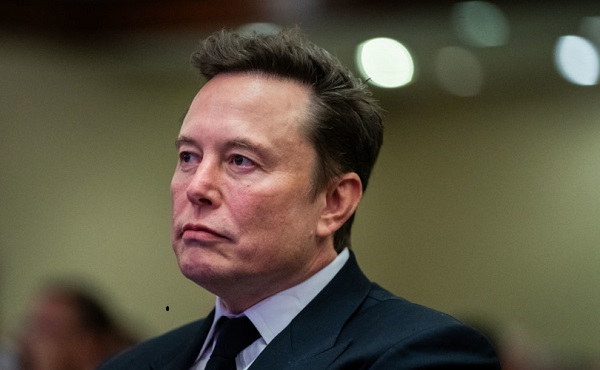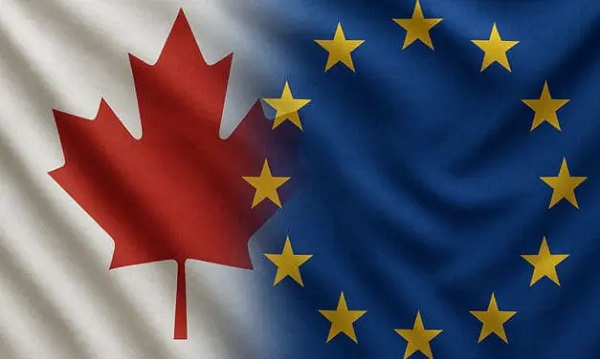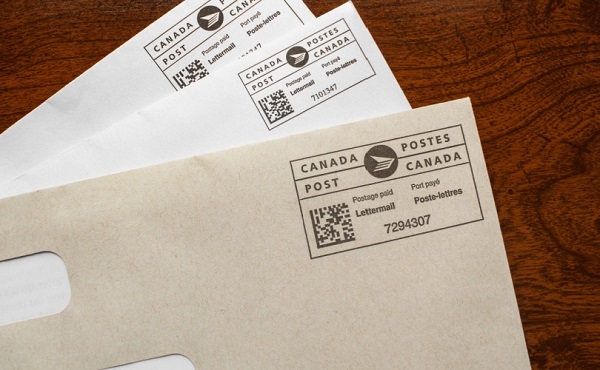Business
Judge blocks Musk’s Department of Government Efficiency from accessing Treasury records

From LifeSiteNews
The emergency ruling comes as 15 Soros-installed AGs seek to block Elon Musk and the Department of Government Efficiency (DOGE) from access to information that would reveal how activist groups in blue states have been funded by the U.S. government.
In a stunning and sweeping emergency injunction that has even stunned the people who demanded it, a Manhattan-based district judge has just removed Secretary of Treasury Scott Bessent from his authority over the Treasury Department; blocked any political appointee from accessing records within the Treasury Department; blocked any “special appointee” of President Trump from records within Treasury; and demanded that all information previously extracted be destroyed.
The emergency injunction, signed by District Judge Paul Engelmayer in Manhattan, was determined without any input from the Trump administration and applies until Friday, February 14, 2025, when U.S. District Judge Jeannette A. Vargas will hear the full arguments of the lawsuit.
The emergency ruling comes as a result of 15 (Soros-installed) attorneys general from New Jersey, New York, Arizona, California, Colorado, Connecticut, Delaware, Illinois, Maine, Maryland, Minnesota, Nevada, Rhode Island, and Vermont all filing suit in New York seeking to block Elon Musk and the Department of Government Efficiency (DOGE) from access to information that would reveal how activist groups in their states have been funded by the U.S. government.
READ: Judge blocks Trump plan that would put thousands of USAID staff on paid leave
From Reuters:
The lawsuit said Musk and his team could disrupt federal funding for health clinics, preschools, climate initiatives, and other programs, and that Republican President Donald Trump could use the information to further his political agenda.
DOGE’s access to the system also ‘poses huge cybersecurity risks that put vast amounts of funding for the States and their residents in peril,’ the state attorneys general said. They sought a temporary restraining order blocking DOGE’s access.
The judge, an appointee of Democratic former President Barack Obama, said the states’ claims were ‘particularly strong’ and warranted him acting on their request for emergency relief pending a further hearing before another judge on February 14.
‘That is both because of the risk that the new policy presents of the disclosure of sensitive and confidential information and the heightened risk that the systems in question will be more vulnerable than before to hacking,’ Engelmayer wrote.
New York Attorney General Letitia James, a Democrat whose office is leading the case, welcomed the ruling, saying nobody was above the law and that Americans across the country had been horrified by the DOGE team’s unfettered access to their data.
‘We knew the Trump administration’s choice to give this access to unauthorized individuals was illegal, and this morning, a federal court agreed,’ James said in a statement.
‘Now, Americans can trust that Musk – the world’s richest man – and his friends will not have free rein over their personal information while our lawsuit proceeds.’
Engelmayer’s order bars access from being granted to Treasury Department payment and data systems by political appointees, special government employees and government employees detailed from an agency outside the Treasury Department.
The judge also directed that anyone prohibited under his order from accessing those systems to immediately destroy anything they copied or downloaded.
The order by the judge is transparent judicial activism; it will almost certainly be overturned and nullified by later rulings. However, it creates blocks and slows down the goal of DOGE and the objective of the Trump administration.
On what basis do states think they can sue the federal government to stop the federal government from auditing federal spending? How can a judge block the executive branch from executing the functions of the executive branch? This lawfare activism is ridiculous.
Within the ruling:
… restrained from granting access to any Treasury Department payment record, payment systems, or any other data systems maintained by the Treasury Department containing personally identifiable information and/or confidential financial information of payees, other than to civil servants with a need for access to perform their job duties within the Bureau of Fiscal Services who have passed all background checks and security clearances and taken all information security training called for in federal statutes and Treasury Department regulations… [Emphasis added.]
So the unelected bureaucracy is in charge and not the secretary of the Treasury?
Reprinted with permission from Conservative Treehouse.
Business
Carney’s European pivot could quietly reshape Canada’s sovereignty

This article supplied by Troy Media.
Canadians must consider how closer EU ties could erode national control and economic sovereignty
As Prime Minister Mark Carney attempts to deepen Canada’s relationship with the European Union and other supranational institutions, Canadians should be asking a hard question: how much of our national independence are we prepared to give away? If you want a glimpse of what happens when a country loses control over its currency, trade and democratic accountability, you need only look to Bulgaria.
On June 8, 2025, thousands of Bulgarians took to the streets in front of the country’s National Bank. Their message was clear: they want to keep the lev and stop the forced adoption of the euro, scheduled for Jan. 1, 2026.
Bulgaria, a southeastern European country and EU member since 2007, is preparing to join the eurozone—a bloc of 20 countries that share the euro as a common currency. The move would bind Bulgaria to the economic decisions of the European Central Bank, replacing its national currency with one managed from Brussels and Frankfurt.
The protest movement is a vivid example of the tensions that arise when national identity collides with centralized policy-making. It was organized by Vazrazdane, a nationalist, eurosceptic political party that has gained support by opposing what it sees as the erosion of Bulgarian sovereignty through European integration. Similar demonstrations took place in cities across the country.
At the heart of the unrest is a call for democratic accountability. Vazrazdane leader Konstantin Kostadinov appealed directly to EU leaders, arguing that Bulgarians should not be forced into the eurozone without a public vote. He noted that in Italy, referendums on the euro were allowed with support from less than one per cent of citizens, while in Bulgaria, more than 10 per cent calling for a referendum have been ignored.
Protesters warned that abandoning the lev without a public vote would amount to a betrayal of democracy. “If there is no lev, there is no Bulgaria,” some chanted. For them, the lev is not just a currency: it is a symbol of national independence.
Their fears are not unfounded. Across the eurozone, several countries have experienced higher prices and reduced purchasing power after adopting the euro. The loss of domestic control over monetary policy has led to economic decisions being dictated from afar. Inflation, declining living standards and external dependency are real concerns.
Canada is not Bulgaria. But it is not immune to the same dynamics. Through trade agreements, regulatory convergence and global commitments, Canada has already surrendered meaningful control over its economy and borders. Canadians rarely debate these trade-offs publicly, and almost never vote on them directly.
Carney, a former central banker with deep ties to global finance, has made clear his intention to align more closely with the European Union on economic and security matters. While partnership is not inherently wrong, it must come with strong democratic oversight. Canadians should not allow fundamental shifts in sovereignty to be handed off quietly to international bodies or technocratic elites.
What’s happening in Bulgaria is not just about the euro—it’s about a people demanding the right to chart their own course. Canadians should take note. Sovereignty is not lost in one dramatic act. It erodes incrementally: through treaties we don’t read, agreements we don’t question, and decisions made without our consent.
If democracy and national control still matter to Canadians, they would do well to pay attention.
Isidoros Karderinis was born in Athens, Greece. He is a journalist, foreign press correspondent, economist, novelist and poet. He is accredited by the Greek Ministry of Foreign Affairs as a foreign press correspondent and has built a distinguished career in journalism and literature.
Troy Media empowers Canadian community news outlets by providing independent, insightful analysis and commentary. Our mission is to support local media in helping Canadians stay informed and engaged by delivering reliable content that strengthens community connections and deepens understanding across the country.
Business
EU investigates major pornographic site over failure to protect children

From LifeSiteNews
Pornhub has taken down 91% of its images and videos and a huge portion of the last 9% will be gone by June 30 because it never verified the age or consent of those in the videos.
Despite an aggressive PR operation to persuade lawmakers that they have reformed, Pornhub is having a very bad year.
On May 29, it was reported that the European Commission is investigating the pornography giant and three other sites for failing to verify the ages of users.
The investigation, which comes after a letter sent to the companies last June asking what measures they have taken to protect minors, is being carried out under the Digital Services Act. The DSA came into effect in November 2022 and directs platforms to ensure “appropriate and proportionate measures to ensure a high level of privacy, safety, and security of minors, on their service” and implement “targeted measures to protect the rights of the child, including age verification and parental control tools, tools aimed at helping minors signal abuse or obtain support, as appropriate.”
According to France24: “The commission, the EU’s tech regulator, accused the platforms of not having ‘appropriate; age verification tools to prevent children from being exposed to pornography. An AFP correspondent only had to click a button on Tuesday stating they were older than 18 without any further checks to gain access to each of the four platforms.”
Indeed, Pornhub’s alleged safety mechanisms are a sick joke, and Pornhub executives have often revealed the real reason behind their opposition to safeguards: It limits their traffic.
Meanwhile, Pornhub — and other sites owned by parent company Aylo — are blocking their content in France in response to a new age verification law that came into effect on June 7. Solomon Friedman, Aylo’s point man in the Pornhub propaganda war, stated that the French law was “potentially privacy infringing” and “dangerous,” earning a scathing rebuke from France’s deputy minister for digital technology Clara Chappaz.
“We’re not stigmatizing adults who want to consume this content, but we mustn’t do so at the expense of protecting our children,” she said, adding later, “Lying when one does not want to comply with the law and holding others hostage is unacceptable. If Aylo would rather leave France than apply our law, they are free to do so.” According to the French media regulator Arcom, 2.3 million French minors visit pornographic sites every month.
Incidentally, anti-Pornhub activist Laila Mickelwait reported another major breakthrough on June 7. “P*rnhub is deleting much of what’s left of the of the site by June 30,” she wrote on X. “Together we have collectively forced this sex trafficking and rape crime scene to take down 91% of the entire site, totaling 50+ million videos and images. Now a significant portion of the remaining 9% will be GONE this month in what will be the second biggest takedown of P*rnhub content since December 2020.”
“The reason for the mass deletion is that they never verified the age or consent of the individuals depicted in the images and videos, and therefore the site is still awash with real sexual crime,” she added. “Since the fight began in 2020, 91% of P*rnhub has been taken down — over 50 million images and videos. Now a huge portion of the last 9% will be gone by June 30 because P*rnhub never verified the age or consent of those in the videos and the site is a crime scene.”
Mickelwait has long called for the shutdown of Pornhub and the prosecution of those involved in its operation. This second mass deletion of content, as welcome as it is, reeks of a desperate attempt to eliminate the evidence of Pornhub’s crimes.
-

 Crime2 days ago
Crime2 days agoHow Chinese State-Linked Networks Replaced the Medellín Model with Global Logistics and Political Protection
-

 Addictions2 days ago
Addictions2 days agoNew RCMP program steering opioid addicted towards treatment and recovery
-

 Aristotle Foundation2 days ago
Aristotle Foundation2 days agoWe need an immigration policy that will serve all Canadians
-

 Business2 days ago
Business2 days agoNatural gas pipeline ownership spreads across 36 First Nations in B.C.
-

 Courageous Discourse2 days ago
Courageous Discourse2 days agoHealthcare Blockbuster – RFK Jr removes all 17 members of CDC Vaccine Advisory Panel!
-

 Business19 hours ago
Business19 hours agoEU investigates major pornographic site over failure to protect children
-

 Health1 day ago
Health1 day agoRFK Jr. purges CDC vaccine panel, citing decades of ‘skewed science’
-

 Censorship Industrial Complex2 days ago
Censorship Industrial Complex2 days agoConservatives slam Liberal bill to allow police to search through Canadians’ mail



